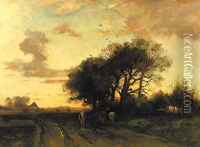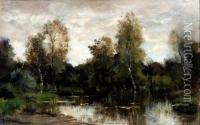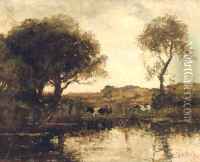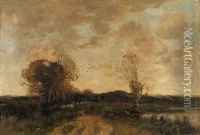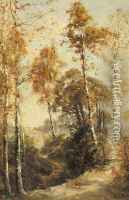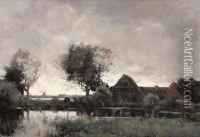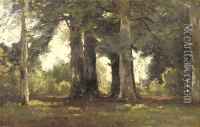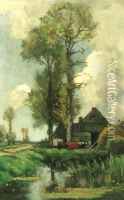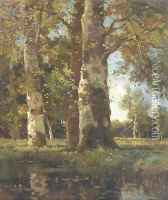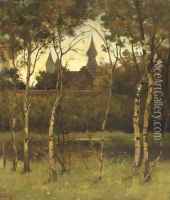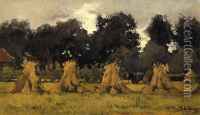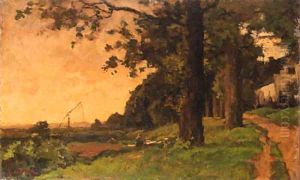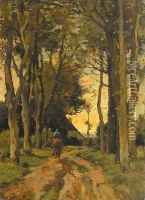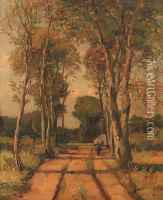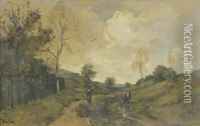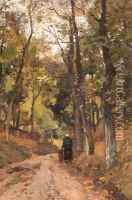Theophile Emile Achille De Bock Paintings
Theophile Emile Achille De Bock was born on April 14, 1851, in The Hague, Netherlands. He was a prominent figure in the Dutch art scene of the late 19th century, known for his contributions to the Hague School of painting. Despite initially pursuing a career in the civil service, De Bock's passion for art led him to abandon his position and dedicate himself to painting full-time. He studied under the tutelage of J.W. van Borselen and later, Johannes Bosboom, both of whom played significant roles in shaping his artistic direction.
De Bock was particularly renowned for his landscape paintings, which often featured the Dutch countryside. His work is characterized by a subtle use of color and a focus on atmospheric effects, capturing the serene and often melancholic mood of the landscapes. He was heavily influenced by the Barbizon school, a movement that advocated for realism in art and inspired artists to paint en plein air (outdoors). This influence is evident in De Bock's preference for naturalistic scenes and his ability to depict the changing moods of nature.
Throughout his career, De Bock exhibited his work extensively in the Netherlands and abroad, gaining recognition and accolades for his contributions to Dutch art. He was a member of several art societies, including Arti et Amicitiae in Amsterdam and the Pulchri Studio in The Hague, which were crucial platforms for contemporary artists of the time.
Despite his success, De Bock struggled financially throughout his life, a predicament not uncommon among artists of his era. He continued to paint and exhibit his work until his death on November 22, 1904, in Haarlem. Today, De Bock's paintings are held in high regard and can be found in numerous collections and museums, serving as a testament to his skill and dedication to the portrayal of the Dutch landscape. His legacy is remembered as a key contributor to the Hague School, marking him as an important figure in the history of Dutch art.
